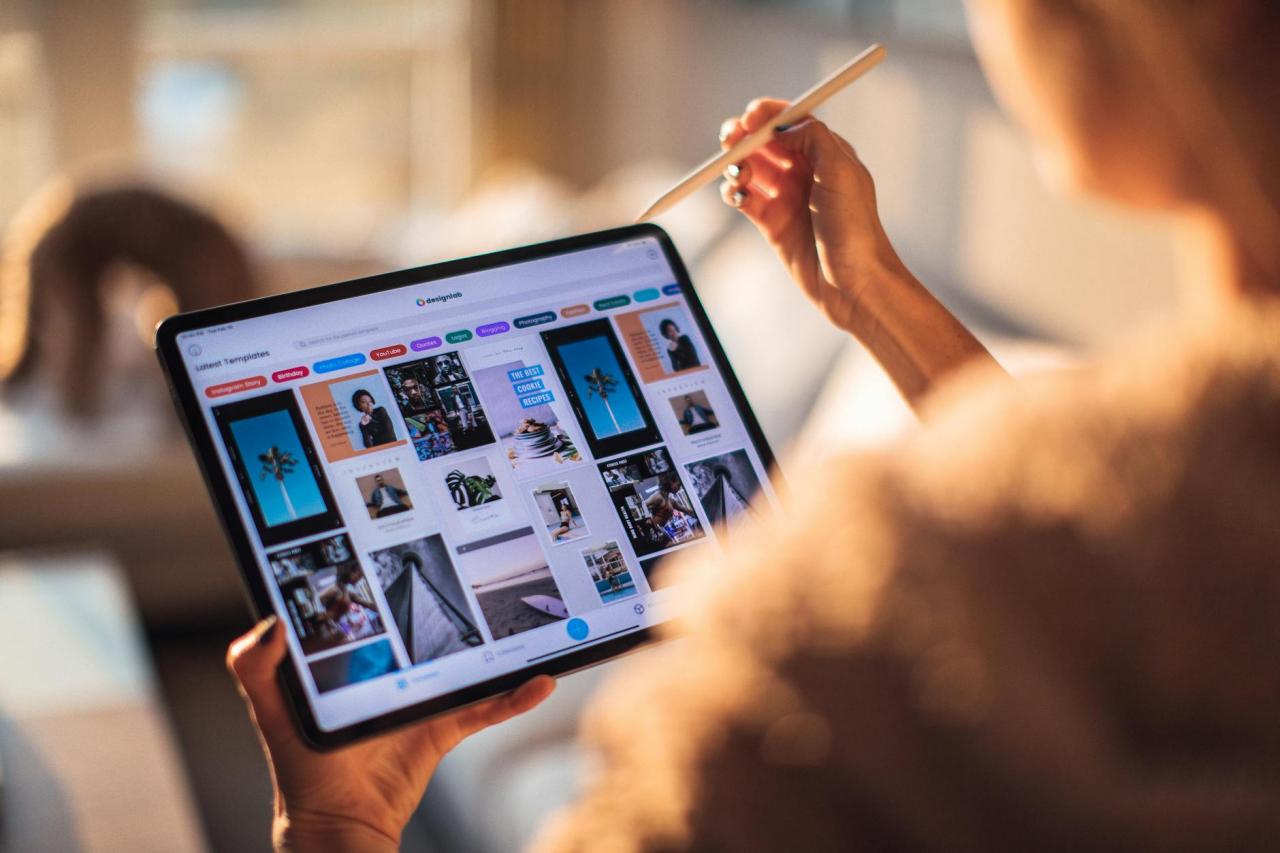From print to pixel: Why your favorite fashion magazines are going digital

Remember the thrill of a new magazine?
There was a certain magic to it. The weight of the glossy paper, the distinct scent of fresh ink, and the thrill of flipping through pages filled with stunning editorials and aspirational fashion. For decades, names like Vogue, Harper’s Bazaar, and Elle were more than just magazines; they were our bibles of style, our monthly escape into a world of glamour and creativity. They sat on our coffee tables like works of art, their covers featuring the world’s most iconic faces.

But in a world that moves at the speed of a scroll, that tactile experience is becoming a treasured memory. The rustle of paper is being replaced by the soft tap of a screen. The biggest names in fashion media are undertaking a monumental pivot, a seismic shift from print to pixel. This isn’t just about putting articles online; it’s a complete reimagining of what a fashion magazine can be. So, what’s driving this digital revolution, and what does it mean for us, the devoted readers and fashion lovers? Let’s dive in.
The end of an era? Why the glossies are logging on
The move to digital wasn’t an overnight decision. It’s the result of a perfect storm of technological advancement, shifting consumer habits, and a global call for greater responsibility. The very fabric of how we consume information has changed, and the fashion industry, always a mirror to the times, is reflecting that change.
The need for speed

Fashion is fast. A trend can be born on a Milan runway, go viral on TikTok, and be available from a fast-fashion retailer in a matter of weeks. A monthly print schedule simply can’t keep up. Digital platforms offer the immediacy that modern audiences crave. News of a celebrity collaboration or a red-carpet showstopper can be published in minutes, complete with photo galleries and video clips, not weeks later in a print issue that was planned months in advance.
Changing reader habits
Think about how you get your news and inspiration today. Is it from a magazine you bought at the newsstand, or from your Instagram feed, a push notification on your phone, or a newsletter in your inbox? For millennials and Gen Z, the answer is overwhelmingly digital. We live on our phones, and we expect content to be accessible, shareable, and interactive. The digital world is where the audience is, and magazines have to meet them there to stay relevant.
The sustainability conversation
The environmental impact of producing and distributing millions of paper magazines each month is significant. From felling trees to the carbon footprint of shipping, the print industry has faced increasing scrutiny. Going digital is a powerful way for these brands to align with the growing demand for sustainability. It reduces waste, conserves resources, and sends a clear message that they are conscious of their impact on the planet—a message that resonates deeply with today’s eco-aware consumer.
From coffee table to chrome tab: The pioneers of the digital shift
This isn’t just a trend; it’s the new standard. The most revered fashion publications in the world are not just participating in the digital age—they are actively defining it. They are transforming from monthly publications into 24/7 global media powerhouses.
Vogue: The undisputed queen goes digital-first

Vogue has always been the authority on fashion, and its digital strategy is no different. Far from being a simple online replica of its print version, Vogue’s digital presence is a universe of its own. Its website is a hub of up-to-the-minute news, in-depth features, and thought-provoking cultural commentary. But the real game-changer is Vogue Runway. Launched in 2015, it has become the ultimate resource for industry professionals and fashion enthusiasts alike, offering comprehensive archives of runway shows from around the globe, mere hours after they happen.
Furthermore, Vogue has masterfully leveraged social media, with millions of followers across platforms like Instagram, YouTube, and TikTok. Their video content, from the ’73 Questions’ series to ‘Beauty Secrets,’ has become iconic in its own right, creating a direct and intimate connection with a global audience that print could never achieve on its own.
Elle: More than a magazine, a global digital network
Elle has brilliantly evolved into a multifaceted digital brand with a strong focus on commerce and community. Their websites are not just places to read about fashion; they’re places to shop it. Through clever affiliate partnerships and e-commerce integrations, an article about the season’s must-have boots can seamlessly lead you to a purchase page. This ‘shoppable content’ model is a key pillar of the new digital magazine economy.
Elle also understands the power of a global-local approach. While maintaining a strong international brand identity, its numerous digital editions around the world cater to local tastes and trends, creating a network that feels both globally connected and personally relevant to its readers from Paris to Tokyo.
Harper’s Bazaar: Crafting luxury online experiences
Harper’s Bazaar has always been synonymous with luxury, sophistication, and breathtaking photography. The challenge was translating that high-end, artistic feel to the digital space, and they have succeeded spectacularly. Their website is a masterclass in clean, elegant design, allowing their stunning visual content to take center stage. They invest heavily in high-production-value video, from behind-the-scenes looks at cover shoots to short fashion films, providing an immersive experience that feels just as luxurious as their print counterpart.
They’ve also successfully digitized their flagship franchises, like the ‘ICONS’ portfolio, turning them into multimedia events that generate massive online buzz and engagement, proving that digital can be just as glamorous and exclusive as print.
The bold move: Brands like InStyle going all-in on digital
Some publications have made the ultimate leap. In 2022, InStyle ceased its print edition entirely to become a digital-only brand. This was a landmark moment in the industry, signaling a definitive shift in priorities. By shedding the costs and logistical constraints of print, brands like InStyle can pour all their resources into creating a dynamic, responsive, and innovative digital product. It’s a bold bet on the future, and one that many others are watching closely.
So, what’s in it for us? The perks and pitfalls of the digital page
This transformation is exciting, but it also changes our relationship with fashion media. Like any evolution, it comes with a host of new benefits and a few things we might miss.
The benefits: Instant style at your fingertips
- Accessibility: No more waiting for the new issue to drop. The latest trends, runway reviews, and celebrity style news are available 24/7, wherever you are.
- Interactivity: Digital content is a two-way street. You can watch videos, click to shop an outfit, listen to podcasts with designers, and share your favorite articles with friends in an instant.
- Infinite space: Unlike a print magazine with a finite number of pages, a website can host a vast archive of content. You can fall down a rabbit hole of past Met Gala looks or track a designer’s entire career with a few clicks.
- Personalization: Many platforms are beginning to use AI to tailor content to your specific interests, serving you more of what you love, from celebrity style breakdowns to deep dives on sustainable fashion.
The nostalgia: What we lose when we lose print
While the benefits are clear, it’s okay to feel a pang of nostalgia for the print era. There’s an undeniable romance to the physical magazine—the joy of discovery as you turn a page, the collectible nature of a beautiful cover, and the focused, offline experience it provides. In a world of digital fatigue and constant notifications, the curated, finite experience of a print magazine can feel like a welcome escape. The challenge for digital publications is to create online spaces that feel just as special and curated, offering a respite from the noise rather than just adding to it.
The next chapter: What does the future hold for fashion media?
The move to digital is not the final destination; it’s just the beginning of a new era of innovation in fashion media. The digital frontier is constantly expanding, and publications are experimenting with new technologies to tell stories in more compelling ways.
The rise of the creator economy
Traditional editors and journalists now share the stage with a new generation of influencers and content creators. The future of fashion media will likely involve a deeper integration between these two worlds, with magazines collaborating with creators who have built trusted communities and a unique voice. The line between editor and influencer will continue to blur, creating a more diverse and democratic media landscape.
Tech, AI, and the metaverse runway
Get ready for a more immersive experience. We are on the cusp of augmented reality (AR) features that could allow you to ‘try on’ clothes directly from a digital editorial. Artificial intelligence (AI) will provide hyper-personalized content streams, and the metaverse could host virtual fashion shows and events accessible to anyone with a headset. Fashion magazines will become portals to these new digital realities, guiding us through the next evolution of style.
A new kind of glossy: Embracing the future of fashion
The iconic fashion magazine is not dead; it’s evolving. It’s shedding its paper skin to become something more dynamic, more immediate, and more connected to the world it covers. While we may miss the feeling of a glossy magazine in our hands, the spirit of curation, storytelling, and inspiration that defined those publications is alive and well on our screens.
The digital shift ensures that the brands we’ve trusted for generations will continue to guide and inspire us, bringing the magic of fashion to a new generation in a new way. The pages may have changed, but the story of style is still being written, one pixel at a time.




